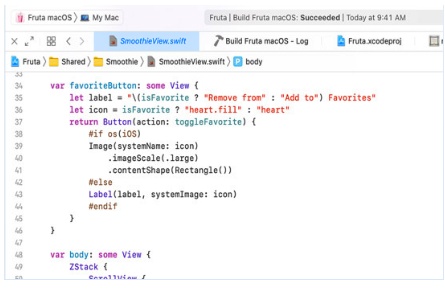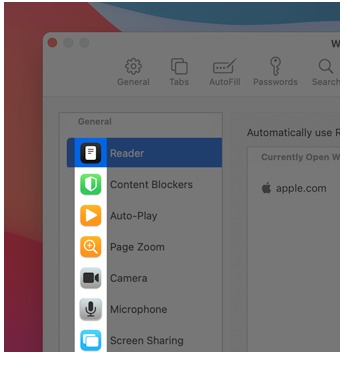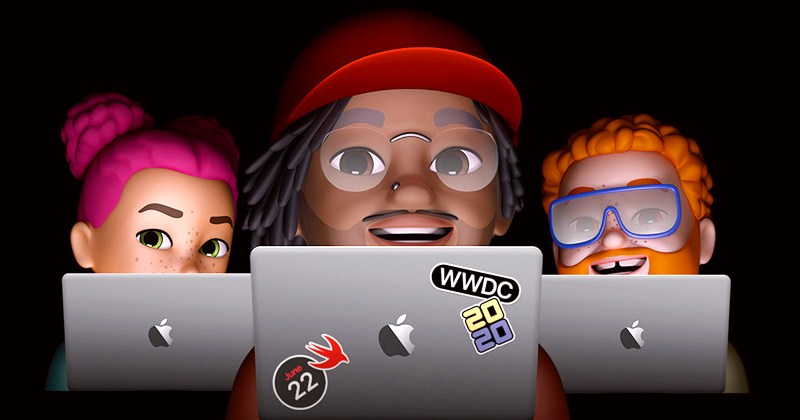At its Worldwide Developer Conference (WWDC) last week, Apple announced an updated lineup of new Apple developer tools. In its announcement, Apple says it now has over 23 million developers creating for at least one of its operating systems including iOS, iPadOS, macOS, tvOS, and watchOS.
Because this year’s WWDC was all online, Apple has stepped up its efforts to solicit developer feedback. Aside from Apple’s annual developer survey, the conference also included an online App Store lab and new forums that will remain open all year.
Here are the main updated or new Apple developer tools announced:
App clips and widgets:
With App Clips, customers have a fast and easy way to discover apps through new visual indicators called App Clip codes, as well as through NFC, shared links, and more. App Clips launch within a few seconds, and show the user a part of your app experience that you choose. Once inside the App Clip, users can install the full app with a single tap.
Widgets have also been redesigned to be more helpful and give users timely information at a glance. With widgets on the Home Screen pages, users can experience the developer’s widget every time they look at their device. And with a new SwiftUI API, developers can use the same code to build a widget for iOS, iPadOS, and macOS.
Greater access to Apple platforms:
Apple has added a new Find My network accessory program that lets third-party device makers take advantage of a network with hundreds of millions of devices, while continuing to offer end-to-end encryption so only the user can see the location of their item. HomePod also has a new program to integrate third-party music services.
If you develop email or browser apps, you can now offer those apps as default options, selectable by users. Also, Safari for Mac is adding support for the WebExtensions API used by Chrome, Firefox and Edge. That makes it easier for extension developers to work with Safari and the Mac App Store.
Redesigned Xcode & business tools:

Xcode is at the center of all Apple platform development and with Xcode 12, it has a fresh new look to match macOS Big Sur. New document tabs (shown here) make opening multiple files fast to support interface files, and logs and project files each open in their own tab. Navigator fonts now match the system size, or can be set to small, medium, or large.
Xcode 12 now builds macOS Universal apps by default to support new Macs with Apple silicon. A new Xcode StoreKit tool lets you simulate subscription setup, in-app purchases, and even refunds — all locally on your Mac. There is also a new StoreKit testing framework that lets you automate testing of purchase workflows.
In addition to shared family app purchases, the App Store now supports Family Sharing for subscriptions and in-app purchases.
Finally, new App Store server notifications for subscription renewal events and customer refunds can help you better manage your customer experience.
If you create games, you’ll be excited to know that Apple has leveled up its Game Center. Updates include recurring leaderboards, a new in-game dashboard, and enhanced recommendations through Friends Playing, where users can discover games that are popular with their Game Center friends.
New SwiftUI capabilities:
SwiftUI is Apple’s modern UI framework for building app UIs. This year, new life cycle APIs let you write an entire app in SwiftUI and share that code across all Apple platforms.
If you’ve already started with SwiftUI, you’ll easily be able to add new features to your existing code. Apple has also added a new Lazy API to help deliver better performance when handling huge data sets.
Customizable apps with Mac Catalyst:

Debuting alongside macOS Catalina at WWDC 2019, Mac Catalyst made it easier for developers to bring their iPad apps to the Mac. With macOS Big Sur (macOS 11, pictured), Catalyst apps automatically inherit the more spacious new design, and new APIs give you greater control over how your apps behave.
You can also now choose to keep your Mac app scaled at a resolution to match your iPad app, or take total control of your Mac interface to create a custom Mac experience.
Once your Mac Catalyst app is ready, you can distribute it in 175 countries on the Mac App Store. And with universal purchase, your app customers can more easily buy your app once for their Mac, iPhone, and iPad devices, and similarly make in-app purchases.
App Store lab & new review processes:
At WWDC20, Apple also launched an online version of its App Store lab to further support the Apple developer community across all of its platforms. In the past, the in-person App Store lab has helped inform and prioritize new App Store features and capabilities, as well as updates to App Store policies.
This year, Apple encouraged developers to share feedback at the virtual lab or through an online survey. Apple plans to create more channels for developers to share feedback during new developer forums that will occur throughout the coming year.
This summer, look for two more changes scoming to the app review process. First, you’ll not only be able to appeal decisions about whether your app violates a given guideline of the App Store Review Guidelines, but you’ll also have a mechanism to challenge the guideline itself.
Second, for apps that are already on the App Store, bug fixes will no longer be delayed over guideline violations except for those related to legal issues. Instead, you’ll be able to address the issue in your next submission.
More privacy transparency:
One important way to build trust with your app users is to disclose your app’s privacy practices. Now, Apple is making it easier for app users to see privacy practices, by giving developers the opportunity to post them right in the App Store for users to review. This includes the types of data your app might collect, whether that data is shared with third parties, and the option for users to opt out.
And more…
Other new Apple developer tools and features include:
ARKit 4 adds new ways to capture information about the real world using a new Depth API that is designed to work with the LiDAR sensor in iPad Pro, enabling entirely new types of apps, such as on-site architecture, design, landscaping, and manufacturing.
Core ML for machine learning development now has new tools in for model deployment and encryption, new templates and training capabilities in Create ML, and more APIs for vision and natural language.
PencilKit now features Scribble, which makes it easier to create apps with text entry fields that users can write in with Apple Pencil. Developers will also have access to stroke data using PencilKit, all while handling both Apple Pencil input and system touch gestures.
Swift Package Manager adds support for resources to easily share Asset Catalog bundles and localizations. And new open source packages for Numerics, ArgumentParser, and System make Swift a great language for more use cases.
TestFlight now supports up to 100 team members for fast build distribution.
AirPods Motion API gives developers access to movement data in real time.
Finally, developers can now enable users to upgrade existing third-party app accounts to Sign in with Apple accounts.
You can test drive any of these new Apple developer tools over at developer.apple.com.





